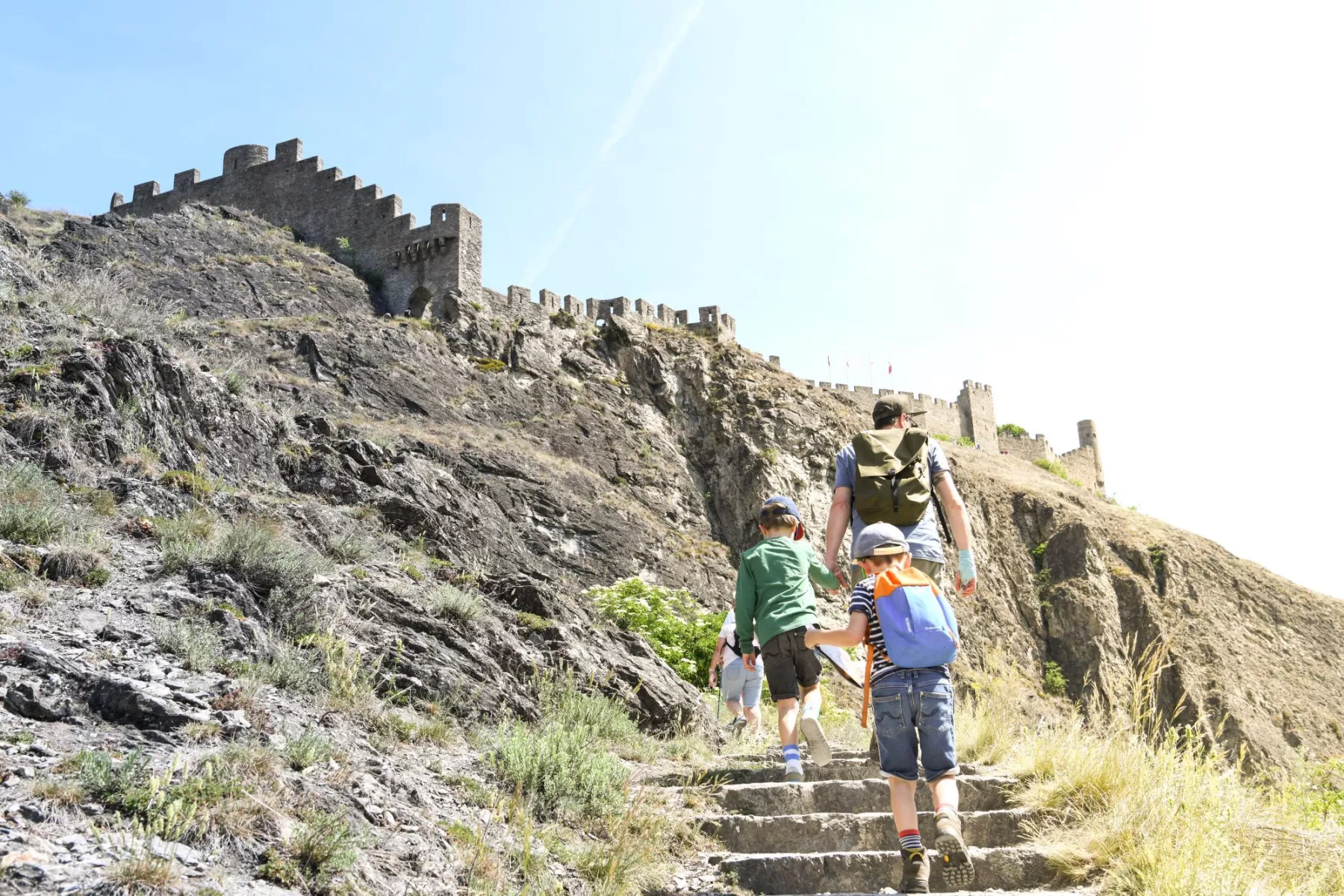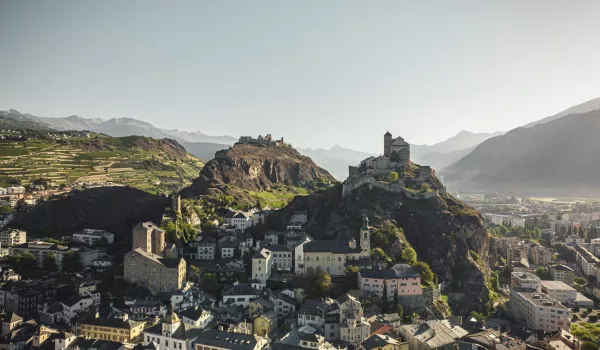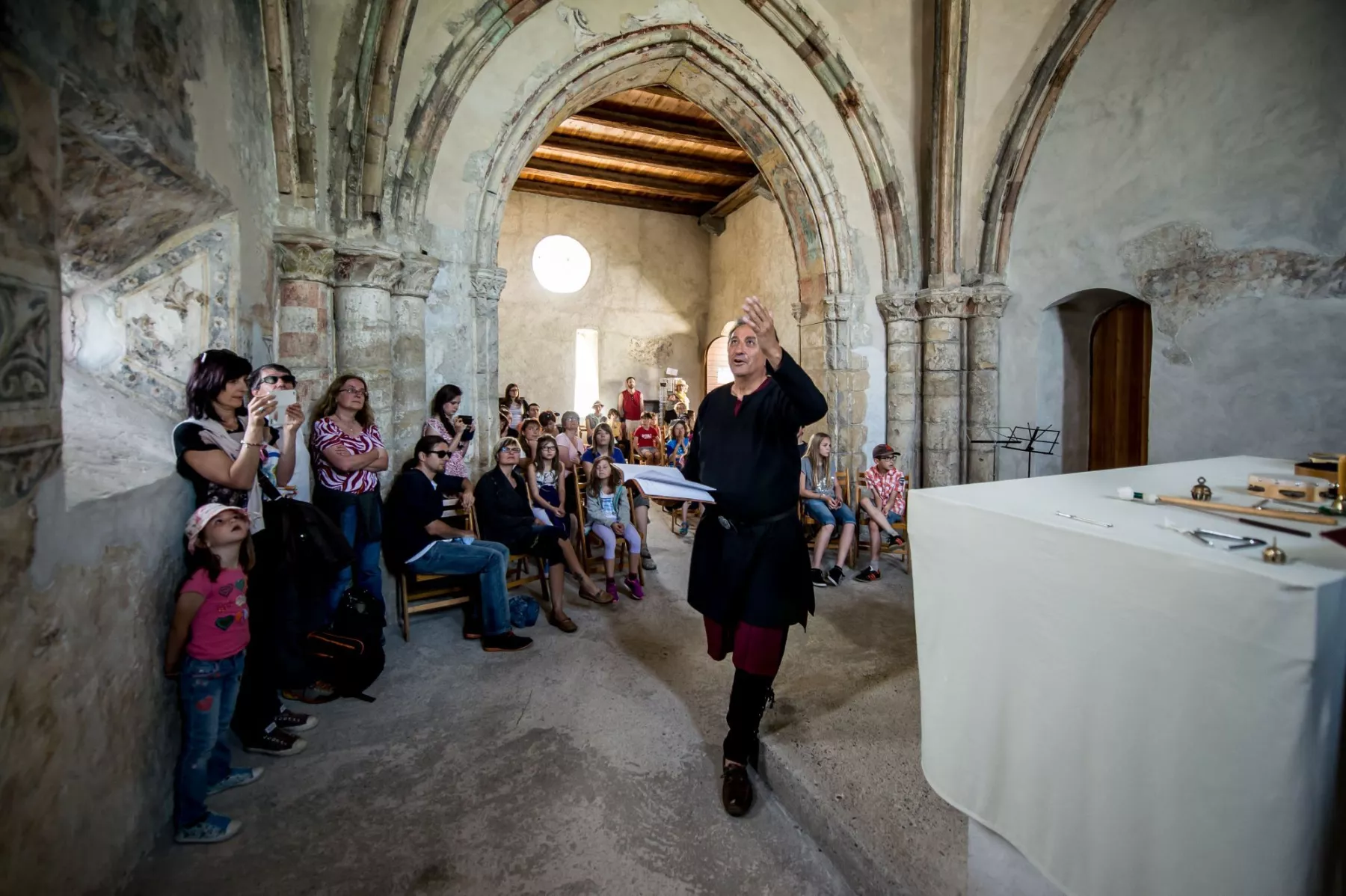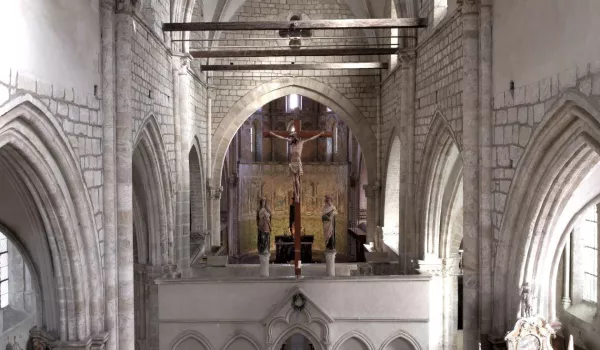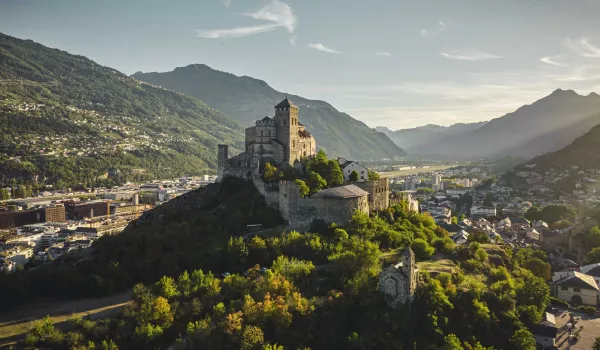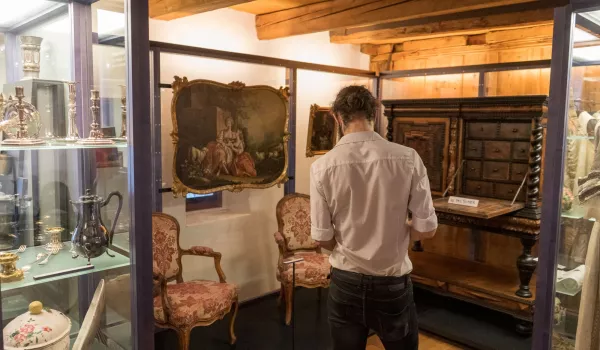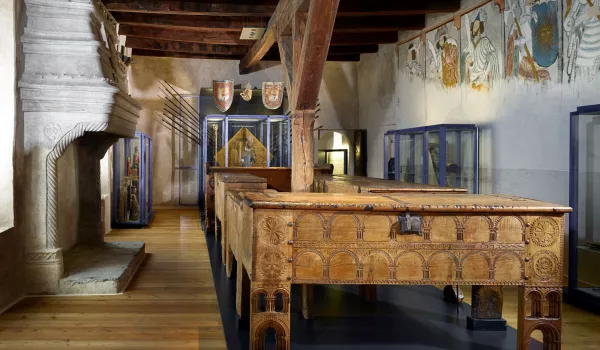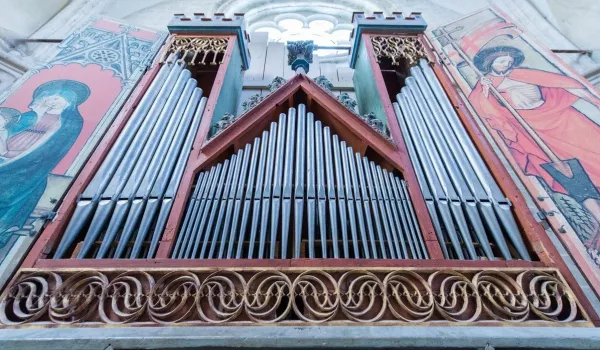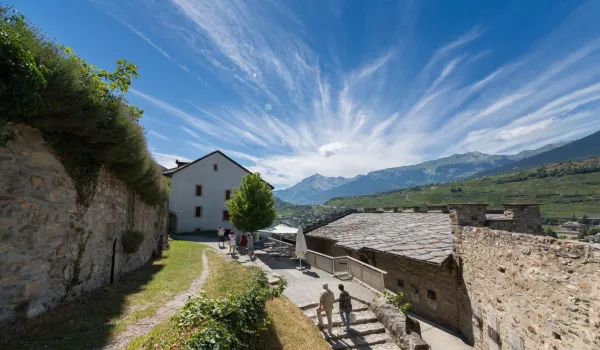Valère and Tourbillon Sion
Sion, VS
On the hills of Sion stand the Valère Basilica in the heart of a Chapter town and the episcopal castle of Tourbillon. They form an exceptional cultural heritage as they have graced the town since the Middle Ages. Don’t miss: the oldest playable organ in the world, the Valais history museum nestled in the old canons’ houses or the old relicts in the open air.
The Castle of Tourbillon
A symbol of secular and spiritual power
It was on the highest hilltop that the prince-bishop of Sion, who wielded temporal and spiritual powers, built his main residence. Boniface de Challant, a descendent of a noble family that left us many castles in the Aosta Valley, began its construction at the very end of the 13th century. Already in 1308 he was in a position to put into effect his first measures. After the acquisition of the Majorie tower, nearer to the town, into which bishop Guichard Tavel moved in 1373, Tourbillon played a military and symbolic role.
Open-air remains
It was dismantled during a revolt of the Valais Patriots in 1417 and completely renovated in the mid-15th century. Only very slight improvements were made over the course of the following centuries, before it was destroyed in the “great” fire of the town in May 1788. It was never rebuilt, but its ruins have since been stabilised, thanks to the Tourbillon Castle Foundation.
The remains are complete enough to give us a good idea of the layout of the medieval castle: the bishop’s residence, the great reception room, the outbuildings, the defensive tower and its dovecote, as well as the ramparts and the site of the parapet walk. The chapel choir, itself better preserved, is well worth a visit in order to admire its rich cycle of murals from the start of the 14th century. In the sacristy, you can see the exposed fragments from the cycle from the middle of the 15th century, left there during restoration work in the 1960s.
The Venerable Chapter Town of Valère
The basilica
The basilica
On the lowest hill sits the cathedral Chapter, the bishop’s “Council of Ministers” in today’s parlance. From the second quarter of the 12th century onwards, the canons began the construction of the church according to the precepts of Roman style. The church was finished towards the middle of the 13th century in the Gothic style. Although the church has remained almost unchanged in its general volume ever since, the interior has evolved over the centuries: murals and organ in the 15th century, Baroque stalls and lateral altars in the 17th century. From around 1800, when the canons left their historic seat to settle around the cathedral, Valère remained peacefully unchanged and today its medieval heritage is in a very rare state of conservation.
The world’s oldest playable organ
Highlights include the oldest organ in the world which is still playable (around 1435), one of the last rood screens in Europe from the 13th century and extremely precious furniture including about a dozen pieces from the 13th century. Raised to the rank of basilica in 1987, the church nevertheless has preserved its primary vocation, and religious ceremonies take place happily alongside cultural visits.
The former canons’ dwellings
In its walled enclosure a real little village sprang up for the 20 to 25 canons which Valère had in the Middle Ages: individual houses – coming from the secular clergy and named by the bishop, the canons of the cathedral Chapter did not function like in a monastery -, communal rooms, arsenal, utility rooms. There was hardly any space left on the site, unlike in Tourbillon, knowing as we do that around two thirds of the buildings were gradually demolished after the canons left.
Wallis History Museum
Since 1883, the rooms which are still preserved have been restored to house the permanent exhibition of the Wallis History Museum, which exhibits principally numerous pieces from the cathedral Chapter collections, sometimes unique (liturgical chests, emblazoned shields, reliquaries, caskets etc).
Tourbillon Castle
From 15th March to 30th April
Monday to Sunday: 11:00 – 17:00
From 1st May to 30th September
Monday to Sunday: 10:00 – 18:00
From 1st Oktober to 15th November
Monday to Sunday: 11:00 – 17:00
Closed from the 16th of November to 14th of March
Valère and History Museum
From October to May
Tuesday to Sunday: 11:00 – 17:00
From June to September
All days: 11:00 – 18:00
Closed: 1st January and 25th December
Closed from 16pm on: 24th & 31st December. The museum is closed all day if these dates fall on a Monday.
Tourbillon Castle
Free entrance. Details on guided tours of the chapel are available here: www.tourbillon.ch/
History Museum
Free admission and activities on the first Sunday of the month.
Payment in Swiss francs only, by credit or debit card. Payment with Twint is not possible.
Tickets
| Adults | CHF 8 |
| Children aged 6 and over & Seniors | CHF 4 |
| Family | CHF 16 |
Basilica Valère
Admission to the nave is free.
For full details of how to visit the Basilica Valère, click here:
www.musees-valais.ch/musee-histoire
Access for people with reduced mobility is very difficult on both sites.
Tourbillon Castle has no restaurant facilities.
The Café de Valère is located in the centre of the chapter town of Valère: www.cafedevalere.ch/
Take advantage of a joint ticket that allows you to visit, at the foot of the Valère and Tourbillon hills, the Valais Art Museum housed in the Majorie and Vidomnat castles, and the Valais Nature Museum, which occupies the former rural outbuildings of the latter.
Joint ticket:
One ticket = Three Museums!
Adults CHF 14
Children aged 6 and over & Seniors CHF 7
Families CHF 28
The joint ticket gives you access to each of the Cantonal Museums once, as well as to the Pénitencier and the Old Chancellery when there are temporary exhibitions there.
This ticket remains valid until all three Museums have been visited.
And don't forget to visit the other medieval treasures of the town of Sion: the cathedral, the church of Saint-Théodule and the Supersaxo house. For further information, visit:
Arrival
Château de Tourbillon et Valère
1950 Sion
The walk from the old town to the two locations takes at least 10 minutes and the last stretch must be covered on foot.
The train station is a twenty-minute walk from the old town.
By train
Sion SBB station, Bus Sédunois 3, Poste du Nord stop.
SBB station, postal buses for Anzère, Ayent, Savièse, Crans or Arbaz, Poste du Nord stop.
By car
Highway A9, exit Sion-Est, direction parking de la Cible or parking du Nord.
On foot
Via Rue des Châteaux. The train station is a twenty-minute walk from the old town.
Arrival with Google Maps
